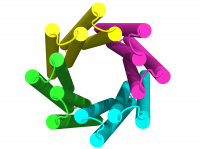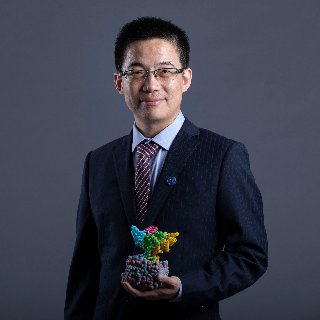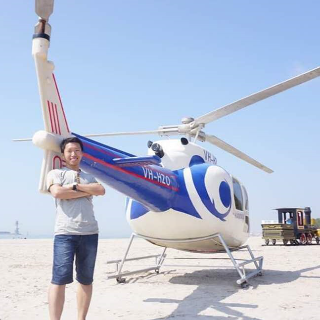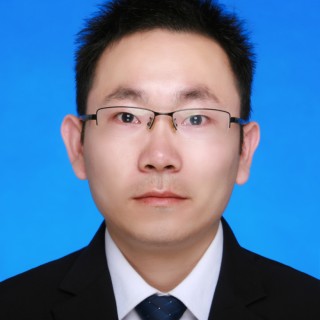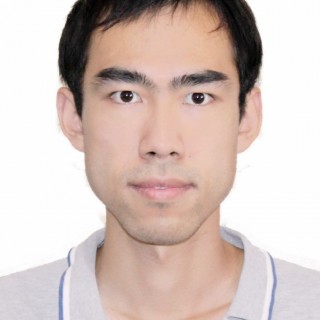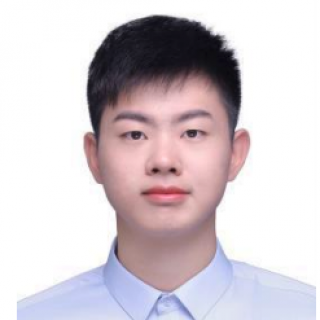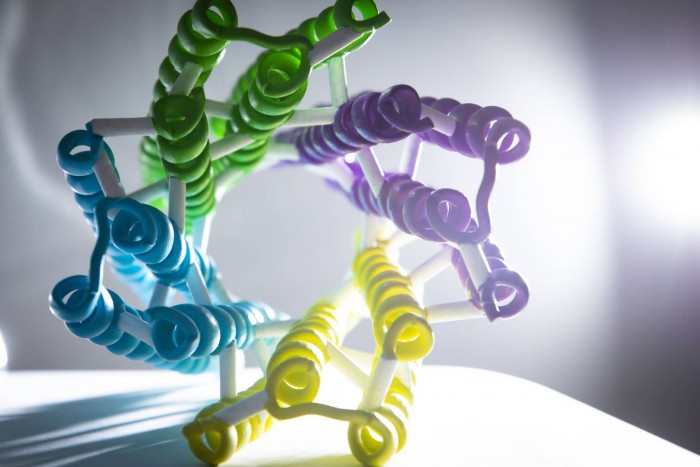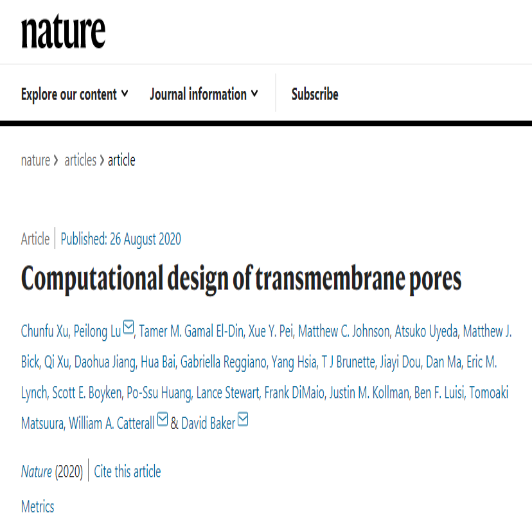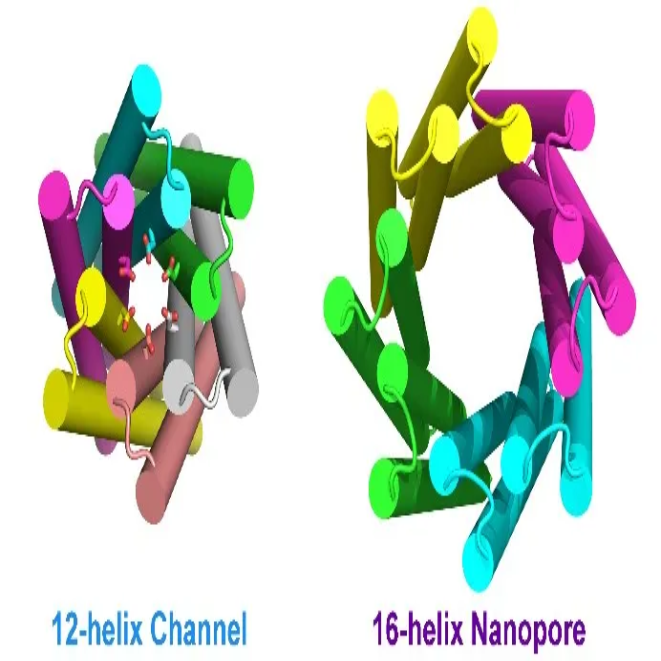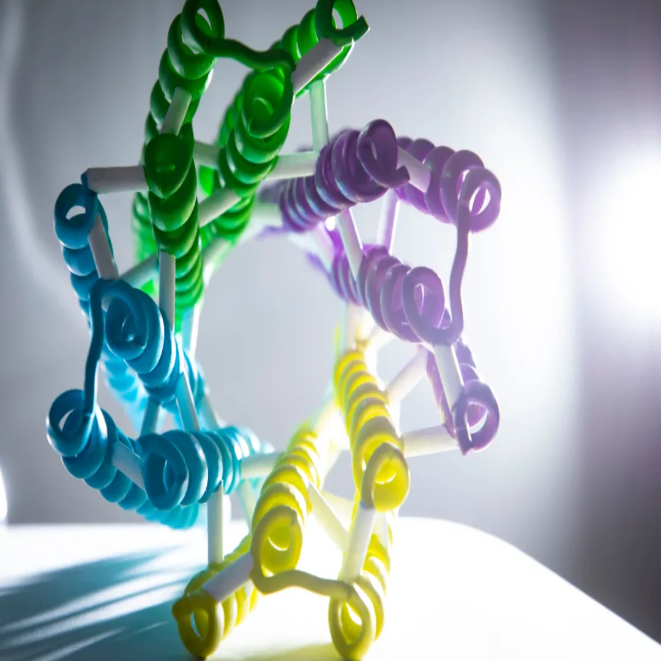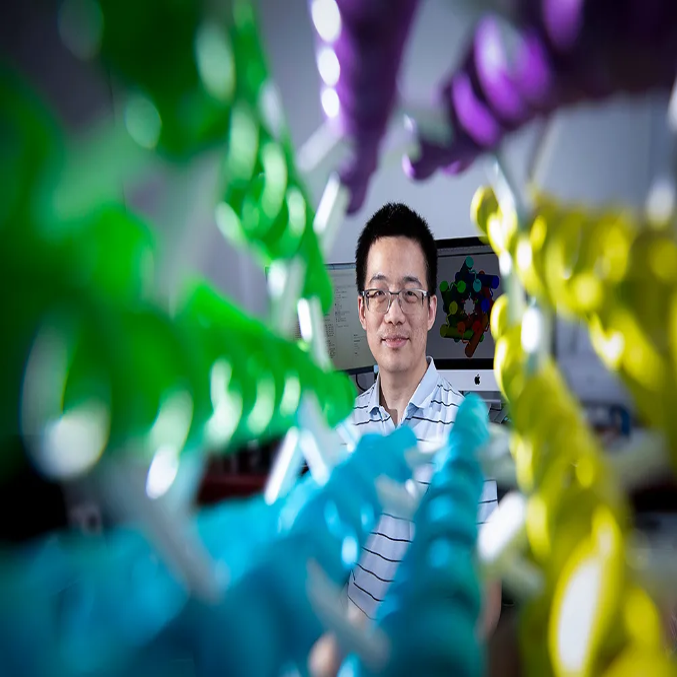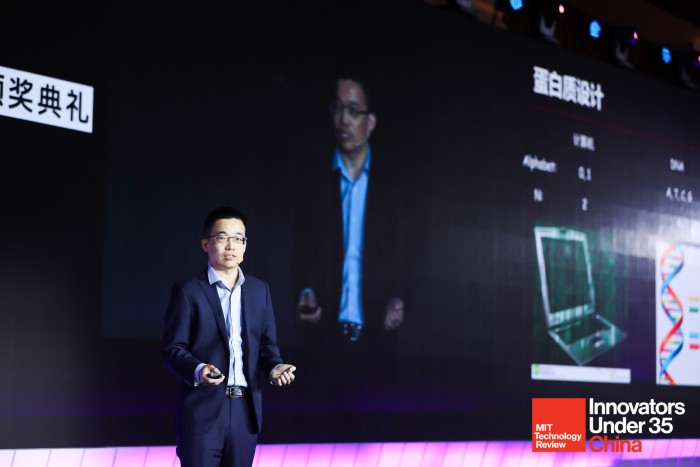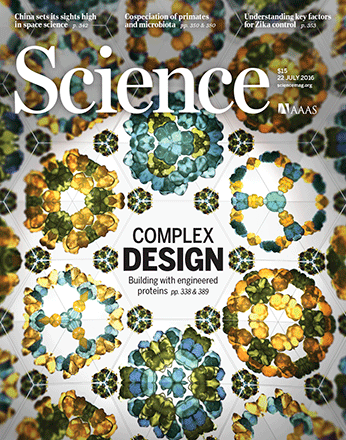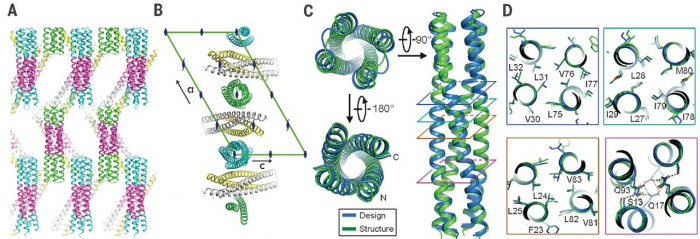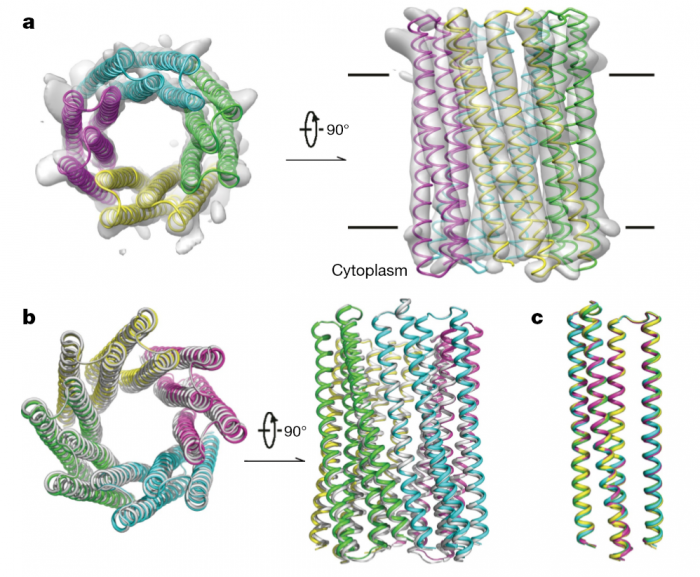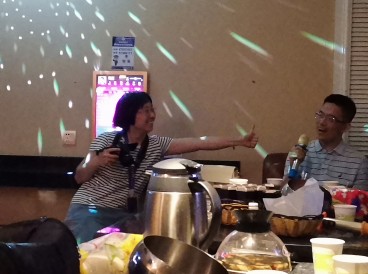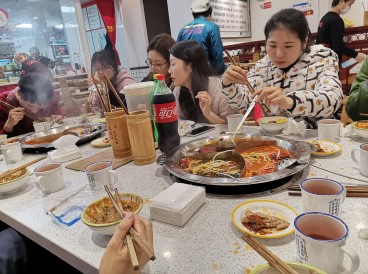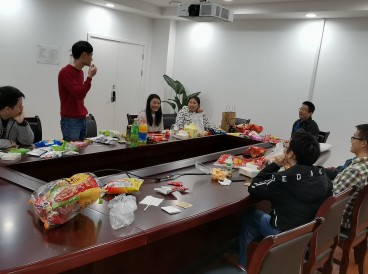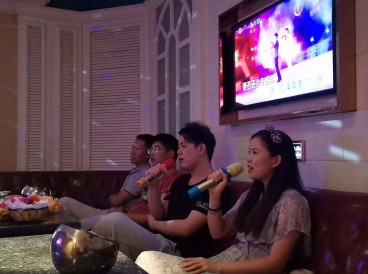"I feel that my greatest prize has been the privilege of a life connected with science. I have enjoyed innumerable discoveries, both my own and those of others, and I have met many kind and interesting people along the way. My best advice to young scientists is to keep your eyes on these prizes. If you do, everything else will fall into place." --------- Ronald D. Vale
https://www.cell.com/cell/fulltext/S0092-8674(19)30340-X
It is a great honor for me to receive the prestigious Gairdner Award for Biomedical Research. The title of this essay might imply that it will contain advice on how to win such a major scientific prize. However, my intention is quite different. More in keeping with the famous civil rights song of the same name, my hope is to articulate a bigger picture view of what matters in the long run. Why do we do science? What is fulfilling about a career in science? Is an international prize the pinnacle of success, or are there more important outcomes?
Prizes recognize fortunate scientists who have unearthed some amazing attribute of living organisms. Under slightly different circumstances and perhaps a bit later, another scientist would have uncovered the same treasure. Thus, winning a major prize is unpredictable; there are too many contingent factors beyond one’s control. Most readers of this article will not win a major prize. However, most scientists will experience the joy of discovery. Unlike awards, which are few in number, discoveries are not uncommon. Unlike international awards, discoveries are bestowed upon undergraduates as well as senior scientists. Even small discoveries can be immensely rewarding. A discovery, along with the people with whom it can be shared, is a “prize” worthy of our attention and aspiration. Such satisfaction is accessible to many people in the scientific profession, if they are cognizant about keeping their eyes on the prize.
Enjoying Discovery
During high school, many students perform laboratory experiments that are intended mostly to reproduce known outcomes (and one’s grade might suffer if results deviate from the expected). I remember the first time I did a real experiment for a science fair project for my biology class at Hollywood High School. I read somewhere that plants and animals could tell time and that these circadian rhythms govern many of their behaviors. How amazing! I first wanted to measure a circadian rhythm myself, specifically the up-and-down motions of the leaves of a bean plant during day and night (see movie). Clearing out a space in our cluttered basement, I built a kymograph consisting of a motor that slowly rotated a coffee can with paper wrapping its exterior; an ink pen, attached via a string to the plant leaf, would trace the motion of the leaf on the rotating paper. It was not very complicated, but I was terrifically pleased that I got it to work.
With this initial success under my belt, I then thought it would be fun to trick the clock and see how it responded to light-dark cycles that strayed from the 24 hour day. What would happen if I turned the lights on and off in my basement every 6 hours? It was the first time I tried to pose my own question and answer it. That was the start of my scientific career. It was a thrill to be on the hunt for knowledge, rather than just memorizing it. I have had a career of posing curiosity-driven questions ever since.
When it came time to present what I thought was an awesome biology project, my biology teacher did not award me with the top grade (similar to “referee 3” of some of my latter scientific papers). However, I expressed my enthusiasm for the project to my high school counselor Ella Hogan. Ella took the initiative of calling a laboratory at UCLA working on circadian rhythms to see if they would take in a high school student who was keen on doing research. The professor (Dr. Karl Hammer) agreed to let me work in his laboratory, and I graduated from my basement to doing experiments in a real laboratory in the Department of Plant Physiology. At the start, my mother patiently drove me—before I had my independent driver's license— to UCLA. Being in high school in those days (1970s) was different than today. Students were not seeking internships and trying to amass multi-page CVs to look good for colleges. I was just doing research because it was interesting and fun (along with other things that teenage kids did in Hollywood, California, at the time).
The point of this tale is that I enjoyed measuring bean plant movements. In fact, from my memory, I enjoyed doing science as much in high school as I do now. Naturally, the level of science has advanced. The home-built kymograph has been supplanted by lab-built single-molecule and light sheet microscopes. My presentations have advanced from science fairs to international conferences. Rudimentary high school results evolved into findings recognized by the Gairdner Award jury. However, I always enjoyed what I was capable of doing at the time. You don’t need to be a Gairdner Award winner to enjoy science.
Cherish Small Victories
Setting one’s sights on answering an interesting scientific question is important. However, nature does not give up its secrets readily. As students advance from college to graduate school, one of the hardest lessons they learn is that many experiments don’t work and that science takes time. The rapid and (for achievers) positive feedback of mid-terms and finals is replaced by the real world situation of conquering the unknown. When it comes to obtaining interpretable results, nature does not grade on a bell curve. Students have to learn patience and resilience, which is as important as learning new techniques. Fortunately, my strongest attributes are patience and determination, which have served me well in my scientific career.
Where is the pleasure in an endeavor that is marked by more failures than victories; where the final goal is a scientific paper that often takes years to produce; where jobs and career advancement are not guaranteed? The answer is in small victories—they are all around if you look for them. The protein preparation that finally worked; arriving at the right salt concentration for your experiment; having the microscope stay in focus for the entire time-lapse movie; etc. Not big results perhaps, but they are personal victories. A moment to congratulate oneself; a good day in the lab to savor. These small victories are the foundation of science; collectively they add up to a successful scientific career. You cannot bypass them on the way to a big result. Importantly, you don’t need to wait for years until the acceptance of a paper or decades until a Gairdner award. Fortunately, pleasure and satisfaction in a scientific project can happen more frequently and to many more people, and one should aim to recognize and acknowledge such moments when they happen.
People Are More Important than Papers
Science is all about the data. Or is it? In addition to results, science is a rich network of social interactions. A well-functioning scientific laboratory is like a family. It is a place of wonderful social interactions and an environment that provides a support structure. Beyond the laboratory, scientists establish deep friendships across the globe, bonds created by shared interests in science as well as by compatible personalities. These interactions have lasting and important value. Friendships established in a laboratory are often friendships for life. Collaborators frequently continue their friendship well beyond an initial connection made through a mutual need of obtaining results. Young scientists remember their kind mentors for their entire lives. Senior scientists are gratified when their mentees return to share their appreciation and memories.
So much attention now is focused on obtaining “high impact” papers, unfortunately measured by publication in a very limited set of journals. A great paper can make a splash and influence the work of other scientists (an important mark of success). However, that high profile paper might be largely forgotten after a few years. Friendships in science, however, can easily last years and often a lifetime. Scientists who understand this and have nurtured these interactions have received a valuable “prize”. They are well-connected and valued by other individuals in the scientific community. This prize is accessible to many scientists, junior and senior, provided that they are mindful of the value of people and not just papers.
Paying It Forward
If we, as scientists, manage to climb up one rung on the career ladder, it is our responsibility to reach down with the other hand and pull the next person up. In addition to being a responsibility, “paying it forward” also creates a sense of well-being and contribution.
I shared a story about my high school counselor; her time and attention had an impact, as it shaped my life and career. I had little to offer her concretely at the time. However, I think that my keen interest and appreciation was rewarding to her. Now that I am older, my career has shifted from being a recipient of opportunity to one who now can focus on supporting others. I make few discoveries with my own hands these days (my last significant one being in 2013). My own hunt for discovery has evolved into vicarious enjoyment of watching trainees go through that process. That role has its own gratification. Seeing young scientists become engaged with science—that is fun! Having a postdoctoral fellow move on to their dream job—that is satisfying!
You don’t need to be famous, be at prestigious university, or win the Gairdner Award to pay it forward. You don’t even need to wait to reach my ripe old age. College students can inspire and mentor high school students. Graduate students can help college students. And so on. There is always some one who will benefit from your attention. This prize in science is awarded to all who show kindness and are willing to look beyond their own career to help others.
The Opportunity to Keep Learning by Enjoying Other People’s Discoveries
There is only so much that one can discover oneself. A year may go by without an exciting result. Fortunately, the overall scientific enterprise is creating a continuous stream of exciting results. Why not enjoy them too?
I enjoy being a scientist, because of the extraordinary opportunity to keep learning. I am a student at heart, and the scientific profession embodies this philosophy in the duties of the job. I am continually amazed by the inner workings of living organisms and their seemingly limitless adaptations. These interesting features of life are being unraveled at a dizzying pace. I feel fortunate to have been trained with the appropriate knowledge and skills to allow me to appreciate the life sciences in these exciting times. It is a joy to listen to a fantastic seminar or read about a clever technique developed by another group. I am happy to hear about science being done beyond the boundaries of my own laboratory. This prize is accessible to undergraduates and Gairdner Award winners alike. We all can enjoy hearing about new results and be in awe of the wondrous attributes of life.
Conclusion
I am very fortunate to have received the Gairdner Award in Biomedical Research, which recognizes approximately two decades of work on the motor protein kinesin from its discovery to the dissection of its mechanism of movement. Without diminishing the honor that I feel on having been selected for this award, I feel that my greatest prize has been the privilege of a life connected with science. I have enjoyed innumerable discoveries, both my own and those of others, and I have met many kind and interesting people along the way. My best advice to young scientists is to keep your eyes on these prizes. If you do, everything else will fall into place.


